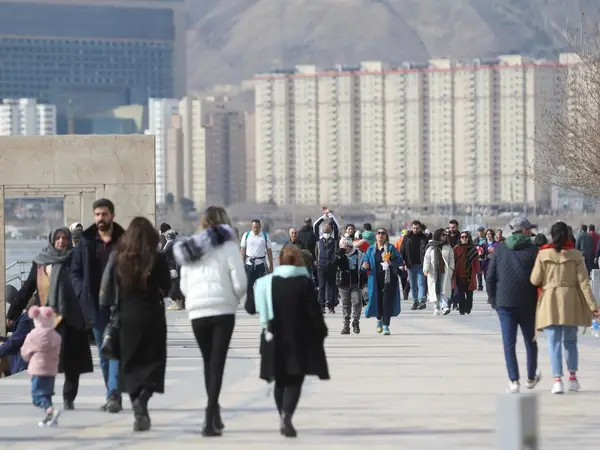Conflicts between vigilantes and women defying hijab in public occur almost daily now while authorities including the President insist on enforcement of rules.
There has been a torrent of comments by clerics and hardliners in recent days against women who ignore hijab rules, while thousands appear in public without a headscarf. As regime vigilantes are encouraged to stop women and admonish them, another serious conflict is brewing in the country.
A video from the CCTV of a convenience store in Shandiz near the religious city of Mashhad went viral on social media Friday that showed a man dumping a large tub of yogurt after an argument on the head of a ‘hijabless’ woman and her mother, who was wearing a headscarf.
The man, apparently a member of the Revolutionary Guards’ Basij militia, had been carrying out his Islamic duty of “calling to virtue and forbidding wrong”. Local authorities said Saturday the man was arrested for disturbing public peace and insulting the women. Officials said that carrying out the duty of hijab enforcement should remain limited to verbal warnings only.
Both women were also arrested for defying hijab rules and the owner of the business was given a warning for allowing violation of the hijab law on his premises.
Dr Mohsen Borhani, a professor of criminal law at Tehran university, who was recently sacked for criticizing the regime after the execution of four young protesters, argued in a tweet Friday that even according to Islamic Sharia and laws, carrying out the religious duty of calling to virtue and forbidding wrong should never go beyond a verbal warning.
Attacking people and their property or violating their dignity and rights are criminal acts and victims have the right to self-defense according to Article 156 of the Islamic Penal Code of Iran, Borhani, a well-known religious scholar, wrote.
Moderate Muslims, including some clerics, have also been critical of hardliners intimidating women to impose the hijab.
“This was not a tub of yogurt that was thrown on a girl’s head. It was bigotry and a putrid sludge crammed into the head of the yogurt-thrower over the years,” reformist politician and cleric Mohammad Ali Abtahi who served as vice-president under Mohammad Khatami in late 1990s and early 2000s protested in a tweet.
‘Hijabless’ girl in Gonbad-e Kavous, a rather conservative city in northeastern Iran
In July 2022, after weeks of harsher measures on the streets, President Ebrahim Raisi ordered all government entities to strictly implement a “chastity and hijab” law approved by the Supreme Cultural Revolution Council under hardliner Mahmoud Ahmadinejad in 2005. He insisted again today, Saturday, that women should abide by the hijab rules.
“Chastity and hijab are religious matters and all pious Muslims stress on its necessity. Hijab protects the individual and the society from all harms and deviations,” he said, adding that since there is a law, even those who say they do not believe in hijab must abide by the rules. “Women and girls have shown that they abide by the law and will continue to do so.”
In the past four decades women generally demonstrated their opposition to compulsory hijab by making their headscarves smaller and letting their hair cascade on their shoulders from under it or making their tunics tighter and trousers shorter, wearing colorful clothes and putting on make-up.
Authorities referred to these women’s hijab as ‘bad’ or ‘improper’ and called them ‘bad-hijab women’.
It was only in 2018 that some women in Tehran and other larger cities began to wear their headscarves on their shoulders rather than their heads wherever they could. Now many are not even carrying a headscarf in their bag to use if they get into trouble. They are referred to as ‘hijabless’.
Defiance of hijab rules as a form of civil disobedience has hugely grown across the country after the death the 22-year-old Mahsa (Jina) Amini in custody of morality police in mid-September. Many believe that there is no sign ‘hijabless’ women will allow to be bullied again into wearing the hijab.
